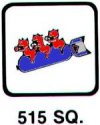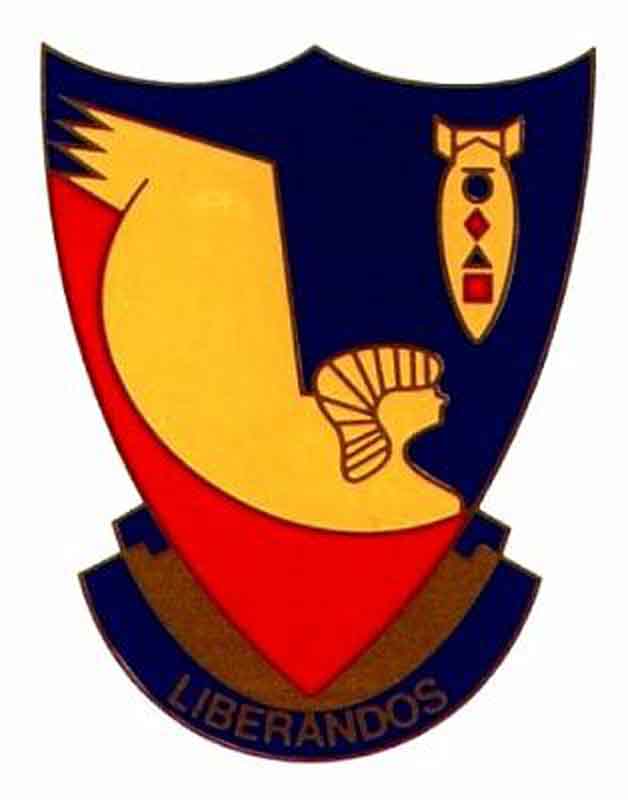Kermit Pete (Pete) Hansen's diary part 2
The War Years
Pete joined the United States Army Air Corp. in January 1942, soon after airplanes from the Japanese Navy bombed Pearl Harbor, Hawaii. The United States of America was at war.
As a cadet Pete trained at Minter Field in Bakersfield, California, from January to February. He was then sent to King City, California, from February to April for pilot training, but was sent to Santa Ana, California, for reclassification to bombardier school because of depth perception problems. From Santa Ana, Pete went to Roswell, New Mexico for bombardier training. He trained for three months from June to September 5, 1942. Pete graduated as a Second Lieutenant and was sent to basic training in Tucson, Arizona, for the month of September. At this time the flight crew, consisting of pilot, Don Hurd; co-pilot, Arnie Good; bombardier, Pete Hansen; navigator, Jack Reiter, engineer, John Farnum; Don Emaus, Scott Farrington, and Art Johnson, gunners; and radio operator, Harry Crampton; was put together.
The crew went from Tucson to El Paso, Texas, for bombing and gunnery practice; to Topeka, Kansas for navigational training, including flying into thunderheads for instrument flying; and to Salina, Kansas, for more practice. At this time, the crew received their B-24D bomber, which they flew to Morrison Field, West Palm Beach, Florida, and then to combat overseas. Pete was 23 years of age.
At Morrison, Pete’s crew received their secret orders to be opened after they arrived in Puerto Rico. The bombsite was also classified secret and two men accompanied Pete when it was installed into the airplane.
The pilot received $10,000 in cash from the U.S. Government from which to pay the nine crewmen their $6 per day per diem. While in Puerto Rico, they bought rum and other liquor to take with them overseas.
From Puerto Rico they flew to Georgetown, British Guyana, (now called Guyana ). On the way, two engines on the airplane were lost and they almost crashed into the jungle. The crew jettisoned what they could from the aircraft to lighten the load. A B-24 stalls at 90 miles per hour and the plane was shuddering. They then discovered that the landing gear was not lowered; they fixed that problem, and landed safely.
They stayed in British Guyana for two weeks waiting for the engines to be replaced. The weather was rainy and humid. Pete and his fellow crewmen used this time for some rest and relaxation. They played poker, using the aforementioned $10,000. Pete and his friend Jack went to Georgetown to go to a U.S.O. dance. They had a wonderful time. They were the only two Caucasians there. The rest of the people were natives from the region.
Next stop was Belem, Brazil, for one night and then to Ascension Island overnight and on to Accra on the Gold Coast of Africa (now called Ghana ). There they stayed for two or three days. The local natives did their laundry, shined their shoes, and were their servants. From Accra they flew to Central Africa en route to Khartoum and finally in February 1943, arrived in Soluch in the Libyan Desert. From this desolate area, the bombing missions began.
Pete and his crew bombed many Axis targets, including Palermo, Sicily, and other targets in Sicily, Greece, Southern Italy, and Vienna, Austria. Vienna was a seven or eight hour flight. They sometimes carried extra fuel in wing tanks for these long flights. They bombed the Messina Straits in Italy, which was a supply area. They also bombed the German headquarters in Sicily. They mostly bombed supply routes, air bases, and railroad yards.
Rome, Italy was considered an open city and was not to be bombed. Leaflets were dropped on Rome telling the Italians to watch at a certain date and time precision bombing of their railroad yards. The Pope in the Vatican was invited to watch. Pete was the lead bombardier on this raid, and, as a result, his name was broadcast over Reuters radio and was heard back home.
The Germans violated the conditions of an open city, so the U.S. bombed Rome.
After a bombing raid, Pete’s plane nearly crashed in the Mediterranean Ocean off of Rome. They were running low on fuel and there was a problem with the fuel transfer of the extra on board fuel. Pete was getting prepared to ditch in the ocean when the co-pilot, Arnie Good, ran to the area where the fuel transfer switching was done and was able to fix the problem.
Another target was the German base close to the island of Malta. The British controlled Malta. The United States wanted to protect Malta because there were RAF fighters assigned there. These fighters would sometimes escort U.S. bombers. In addition, the British would deploy speedboats from Malta to rescue airmen who had been shot down in the area.
On August 1, 1943, Pete and his crew took part in the raid on the Ploesti oil fields in Romania. This raid was known as the “Tidal Wave,” because the planes flew over wave after wave. They practiced for this raid by flying low, no higher than the roofs of houses. Two groups, the 98th Bomb Group and the 376th Bomb Group, known as the “Liberandos,” were part of the 9th Air Force. Three groups, the 44th Bomb Group, the 93rd Bomb Group, and the 389th Bomb Group (part of the 8th Air Force detached to the 9th Air Force for this mission) based in London, flew support in this raid, for a total of 179 airplanes. When the first wave came over, they turned too soon and the Germans were alerted. After the low-level bombing runs, the planes would climb for the higher altitudes to fly back to their base. The German fighters were at these higher altitudes and there was air-to-air fighting. German fighters would attack after bombing raids – not before or during. One hundred sixty two aircraft arrived at the target and 54 were lost.
Pete completed 30 missions including 282 combat hours. He needed 300 combat hours to return home. His crew was to fly the oldest B-24, “The Blue Streak” back to the United States to participate in a 30-day bond tour.


The website 376bg.org is NOT our site nor is it our endowment fund.
At the 2017 reunion, the board approved the donation of our archives to the Briscoe Center for American History, located on the University of Texas - Austin campus.
Also, the board approved a $5,000 donation to add to Ed Clendenin's $20,000 donation in the memory of his father. Together, these funds begin an endowment for the preservation of the 376 archives.
Donate directly to the 376 Endowment
To read about other endowment donation options, click here.
Reunion
NOTE change in the schedule !!
DATES: Sep 25-28, 2025
CITY:Rapid City, SD
HOTEL: Best Western Ramkota Conference Hotel; 2111 North LaCrosse St., Rapid City, SD 57702; 605-343-8500
Click here to read about the reunion details.




















